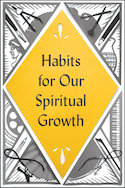What Is the “Millennium” in the Bible?

Disagreements about the when and how of Christ’s second coming begin with the millennium. This refers to the 1,000-year period taught in Revelation 20:1–10, during which Christ reigns with His saints on the earth. There are three basic millennial views, and they differ on the nature of the millennium and whether Christ returns to the earth before or after it. What are these millennial positions?
Amillennialism maintains that Christ’s millennial rule began with His resurrection and ascension and thus we are currently in the millennium. The millennium is not a literal 1,000-year reign of Christ from the earth over the earth; it is an indefinitely long period of time in which He reigns spiritually from heaven over the church. The millennium will end sometime in the future when Christ returns to the earth. At that time there will be a general resurrection of all human beings and then the final judgment, ushering in the eternal states.
Postmillennialism is structured just like amillennialism, since in both views Christ comes back after the millennium. The major difference between amillennialism and postmillennialism is the nature of the millennium. Granted, in both views Christ reigns from heaven. But in postmillennialism, His reign is not a spiritual reign alone, and the full manifestation of the millennium still remains in our future. Christ’s rule over the earth grows gradually as the gospel expands to the ends of the earth and triumphs. This expansion of Christ’s rule through the exponential growth of believers ushers in a golden age where evil is mitigated and the world prospers. Righteousness will triumph throughout the world, shaping culture, politics, economics, and society as a whole, as well as spiritual life. At the end of His triumphal reign over the earth from heaven, Christ will return.
Unlike the other two views, premillennialism maintains that Christ comes before the millennium, and He establishes it Himself. Before He returns to the earth to rule, there is a period (usually understood to be seven years) of intense evil and suffering on the earth known as the great tribulation. This period is identified with Daniel’s seventieth “week” (a sevenyear period) in Daniel 9:24–27. It is a terrible time in which satanic forces, led by the Antichrist (or the “beast” in Revelation) and his henchman (the false prophet), dominate the world and persecute God’s people, while at the same time God pours His wrath on the world. Christ Himself ends the great tribulation when He returns, crushes the forces of evil arrayed against Him, and imprisons Satan (Rev. 19:11–20:3). At this point, Christ resurrects believers martyred during the great tribulation (Rev. 20:4–5); this is called the “first resurrection.” Premillennialists disagree about whether at this point all other believers are resurrected as well, or whether Christ resurrects other believers in an earlier rapture.
With His resurrected saints, Christ rules over the whole world for 1,000 years, a golden age of unprecedented blessing, peace, prosperity, justice, and righteousness (Rev. 20:4–6). Still, the millennium falls short of the perfection of the new heaven and earth, for there are those living under Christ’s rule who have a rebellious heart. This is revealed when Satan is released from his imprisonment for a short time and rallies a vast multitude of rebels to take up arms against Christ, but this rebellion is easily vanquished (Rev. 20:7–10). At this point comes the final judgment, including the resurrection of unbelievers to eternal condemnation.
A significant number of premillennialists are dispensationalists. Dispensationalism maintains that the Lord made promises to the nation of Israel in the Old Testament. Because Israel and the church are distinct entities, the church cannot fulfill those promises, and so they remain unfulfilled. Dispensationalists teach that the Lord will fulfill those promises to Israel during the millennium, when Israel turns to the Messiah and is redeemed. All dispensationalists are therefore premillennial, although not all premillennialists are dispensational.
Clearly premillennialism (in its various versions) is more complex than both amillennialism and postmillennialism. But its complexity arises directly from the narrative flow of Revelation 19:11–20:10, read rather straightforwardly. Because amillennialists believe the New Testament teaches a simpler end of history than that posited by premillennialists (e.g., in 2 Peter 3:10–13), they approach Revelation 19–20 less chronologically and more symbolically. Similarly, postmillennialists also approach this text more symbolically, believing that postmillennialism is supported by several kingdom parables that speak of the kingdom gradually growing until it permeates the world (e.g., the mustard seed and leaven in Matt. 13:31–33). Premillennialists insist that a straightforward, chronological reading of Revelation 19–20 is warranted by the text itself, as well as by a plain reading of many Old Testament predictions about the future.
But perhaps none of these views matters all that much in the end. Perhaps we should just adopt a “panmillennial” view, that it will all pan out in the end. While it might make us feel better to dismiss a contentious issue as unimportant and impractical, it is unwise. Apart from directly affecting how we interpret texts like Revelation 19–20, one’s view on the millennium also shapes how one understands the end of the Bible’s storyline. This in turn affects how one understands the entire storyline, other predictive passages, and the relationship between the Old Testament and New Testament. The question of the millennium should not be quickly dismissed.
50 Most Important Theological Terms
by J. Brian Tucker and David Finkbeiner
Theology can be intimidating, full of big words and lofty ideas. Yet theological terms aren’t just for professors to argue about in the...


Free ebook: Habits for Spiritual Growth
Sign up for our weekly email and get a free download
Bible Insights by Email
Sign up for learning delivered to your inbox weekly

Free ebook: Habits for Spiritual Growth
Sign up for our weekly email and get a free download